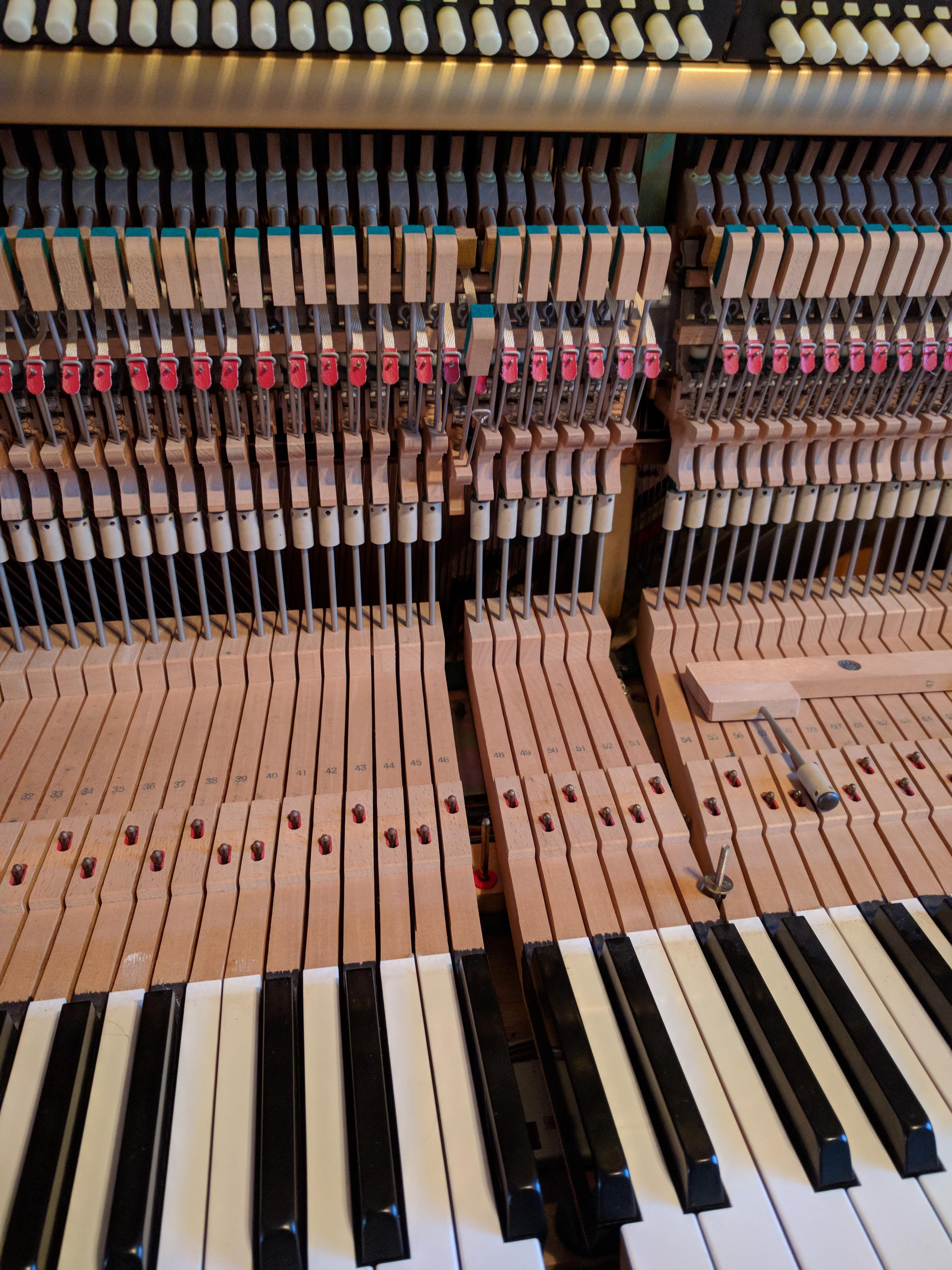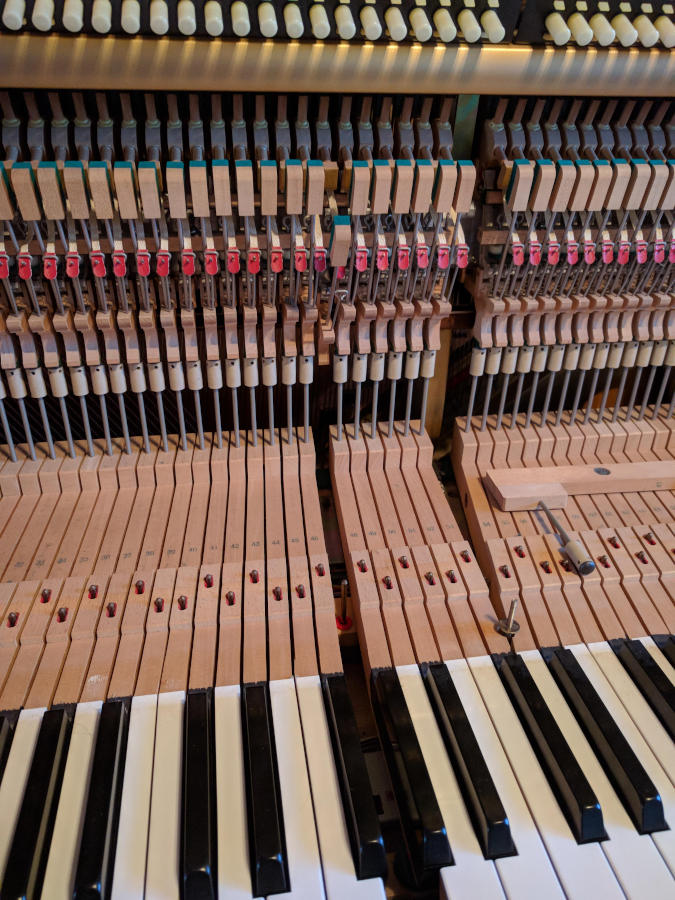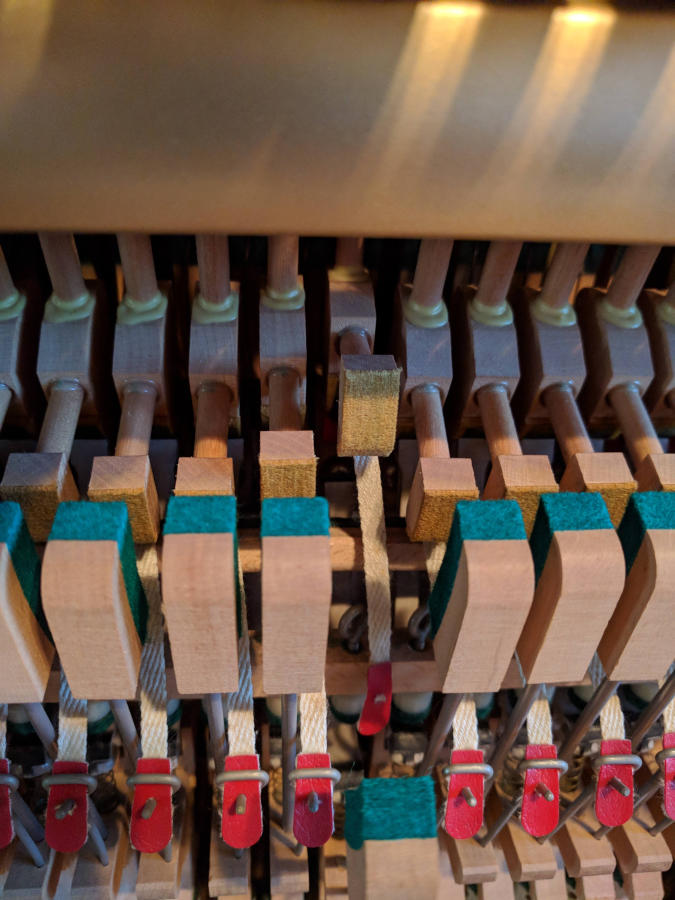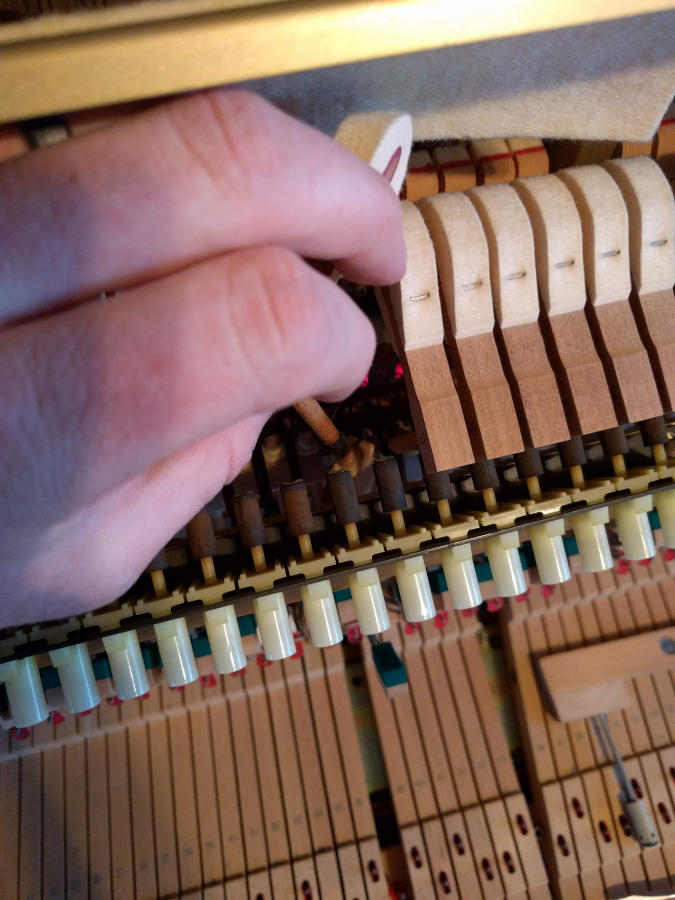I played a lot of piano over the holidays, and by January I noticed that a couple of keys were beginning to make a fairly annoying clicking sound when the hammer struck. Opening the piano up, I found that the heads of the offending hammers were loose. Hiring someone to fix this would probably have run a couple hundred dollars, but it is simple enough to do in about two hours. This is probably a common occurrence on pianos that are frequently played too loudly, so here is a tutorial on hammer repair.
- Open the piano up.
- Remove the key retaining bar. It sits across the top of the key planks and is fastened down in multiple places.
- Remove anything that connects the hammer to other mechanisms, such as fabric straps.
- Remove the key plank. It should just come out at a weird angle.
- Use a long, thin screwdriver to very carefully unscrew the hammer. This is a huge pain.
- Get the hammer out, probably by pushing all of the nearby hammers out of the way.
- Mix up some epoxy and dab a nice glue blob around the loose joint, then wait for it to dry.
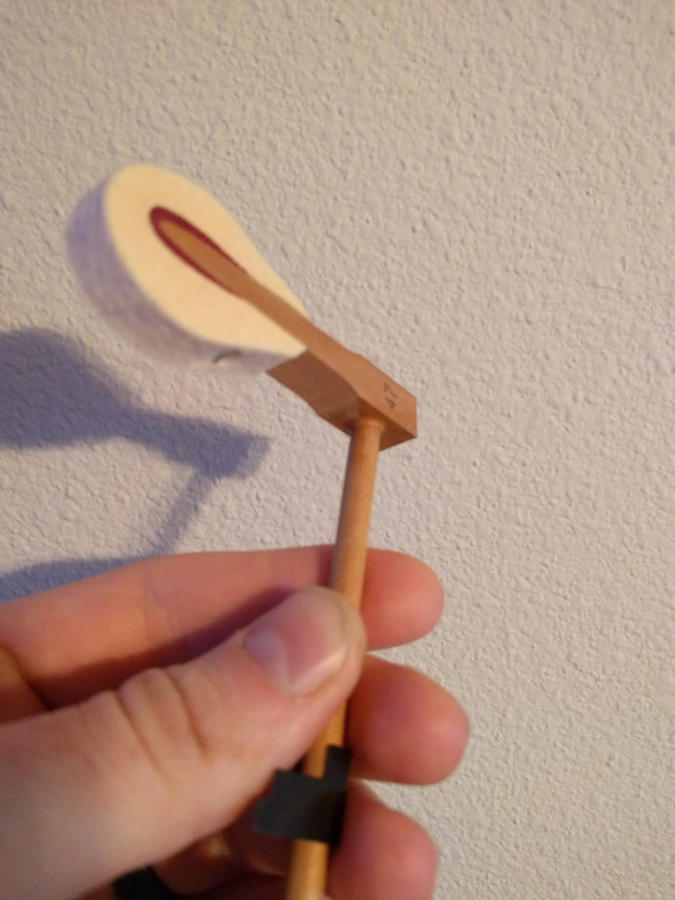
Then I put the whole thing back together.
- Do steps 6-3 in reverse.
- Put the retaining bar back, and tighten it until it is just barely above the key planks. It should be possible to lift the keys up about 1/8″ by pulling on them. Play the piano for a bit, making sure to hit each octave with something fast-paced. If the bar is too loose, you will feel that it is very easy to press the keys and if it is too tight, you will notice that the keys do not consistently produce noise. Adjust as necessary.
- Close up the piano and you’re all done.
At some point I will have to do this on the remaining 86 keys, but for now none of them show signs of damage.

